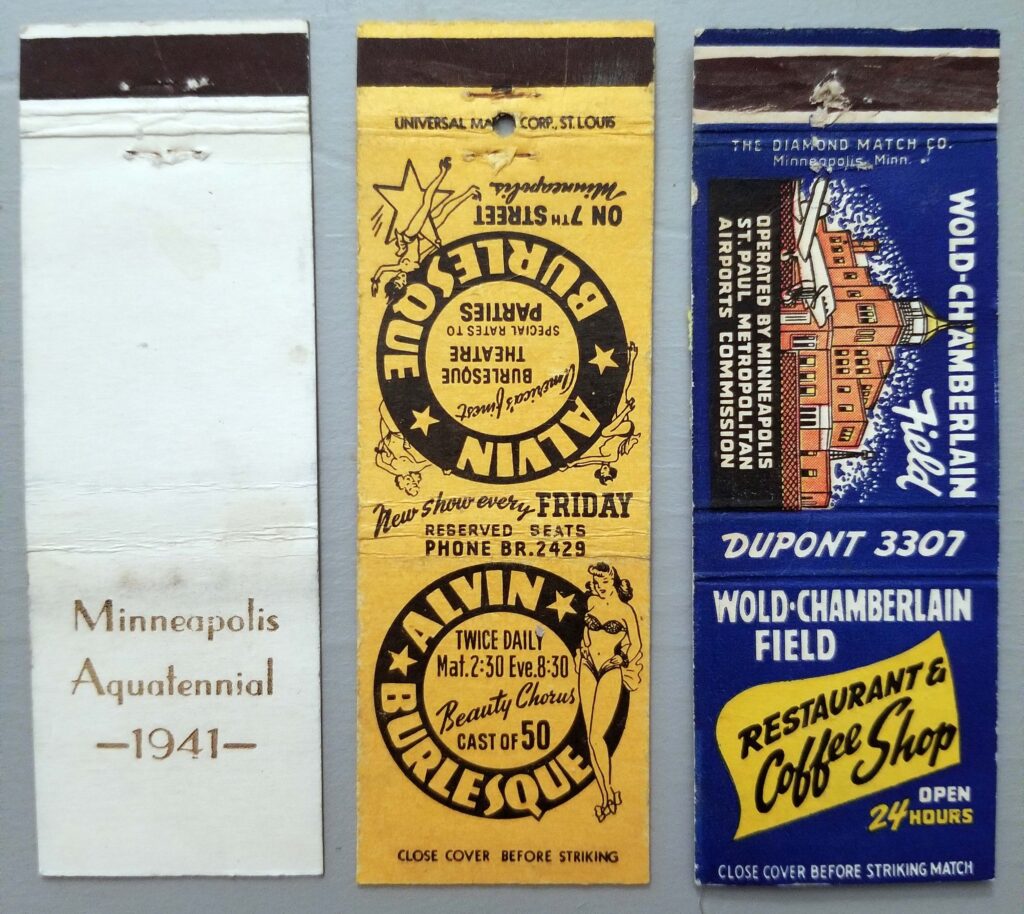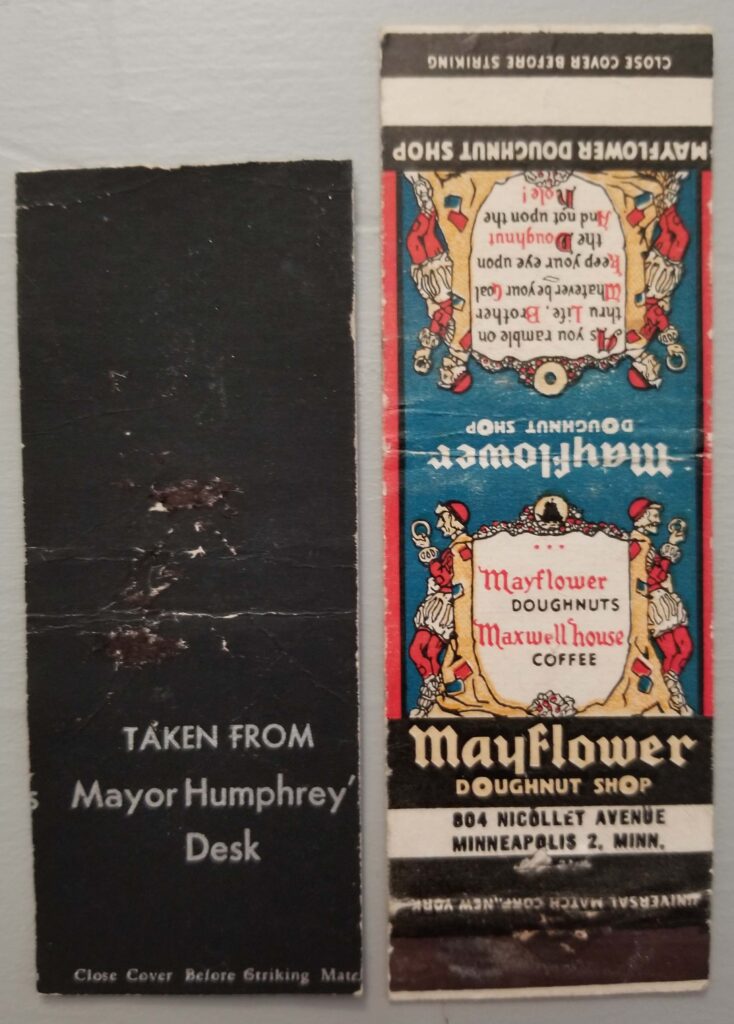Smoking and Matchbooks
In the distant future when archaeologists explore landfills around Minneapolis, they will undoubtedly uncover some soggy packages containing unused “cancer sticks,” (now we know what they are) sometimes called cigarettes. At one time smoking cigarettes was widely accepted.
“The Marlboro Man,” “I’d walk a mile for a Camel,” “Lucky Strike green has gone to war.” Ads for smoking and smoke from smoking was everywhere. A rite of passage for many teenagers was to sneak a smoke. My cousin thought it was “cool” to teach me how to roll my own cigarettes – when I was eleven years old. I’m sure that smokers outnumbered non-smokers. Smoking was an acceptable vice – before the health hazards were brought forth.
As a sports enthusiast, I did not smoke – except when I was in the army during the Korean War. During training our leaders regularly allowed a ten minute break for soldiers who smoked. Non-smokers continued to work. I lit a cigarette – and took the allowed break – and did not smoke the cigarette.
Smoking was allowed in theaters – and restaurants – and on airplanes – everywhere. Gradually the smoking hazard grew and restaurants established smoking areas. Airplanes set up designated smoking sections – as if that could help restrict the smoke.
Major lawsuits soon followed – resulting in predominantly non-smoking public areas – and ultimately private decisions to ban most further smoking.
In the landfill mentioned earlier in this blog, the archaeologists also uncovered an advertisement covering some unlit fire sticks (matches – duh!) – used to activate the previously described cancer sticks. When smoking was still popular, every smoker lit their cigarette with a match from a match box, more often called a matchbook. Matchbooks were a widely accepted advertising tool for most restaurants, hotels, businesses, and even an occasional individual who had a message for the public.
I collected match boxes from all over the country. One source for this match box collection was my family and friends during their travels. The local source for my collection occurred after Minnesota Gopher Football games at the old Memorial Stadium. I would circle the stadium many times, picking up discarded match boxes. My match box collection includes many hundreds of boxes advertising mostly no longer existing hotels, restaurants, businesses, airlines, etc. – a literal history of businesses in Minneapolis, reminding us of Minneapolis – as it was.
The former Dayton’s Department Store, Charlie’s Cafe Exceptionale, The Curtis and Dyckman hotels, The President Cafe across the street from the Minneapolis Millers Ball park and even a matchbook “Taken from Hubert Humphrey’s desk.”
Many articles and books have been written about brick and mortar buildings in Minneapolis. Little has been documented about the occupants of these buildings. These matchbooks serve to humanize Minneapolis – who was there and when. These matchboxes are a welcome remnant from an almost forgotten part of our lives.


